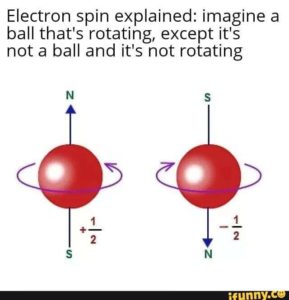The research that gets done in any field of science is heavily influenced by the priorities set by those who fund the research. For science in the US in general, and the field of theoretical physics in particular, recent years have seen a reordering of priorities that is becoming ever more pronounced. As a prominent example, recently the NSF announced that their graduate student fellowships (a program that funds a large number of graduate students in all areas of science and mathematics) will now be governed by the following language:
Although NSF will continue to fund outstanding Graduate Research Fellowships in all areas of science and engineering supported by NSF, in FY2021, GRFP will emphasize three high priority research areas in alignment with NSF goals. These areas are Artificial Intelligence, Quantum Information Science, and Computationally Intensive Research. Applications are encouraged in all disciplines supported by NSF that incorporate these high priority research areas.
No one seems to know exactly what this means in practice, but it clearly means that if you want the best chance of getting a good start on a career in science, you really should be going into one of
- Artificial Intelligence
- Quantum Information Science
- Computationally Intensive Research
or, even better, trying to work on some intersection of these topics.
Emphasis on these areas is not new; it has been growing significantly in recent years, but this policy change by the NSF should accelerate ongoing changes. As far as fundamental theoretical physics goes, we’ve already seen that the move to quantum information science has had a significant effect. For example, the IAS PiTP summer program that trains students in the latest hot topics in 2018 was devoted to From Qubits to Spacetime. The impact of this change in funding priorities is increased by the fact that the largest source of private funding for theoretical physics research, the Simons Foundation, shares much the same emphasis. The new Simons-funded Flatiron Institute here in New York has as mission statement
The mission of the Flatiron Institute is to advance scientific research through computational methods, including data analysis, theory, modeling and simulation.
In the latest development on this front, the White House announced today \$1 billion in funding for artificial intelligence and quantum information science research institutes:
“Thanks to the leadership of President Trump, the United States is accomplishing yet another milestone in our efforts to strengthen research in AI and quantum. We are proud to announce that over $1 billion in funding will be geared towards that research, a defining achievement as we continue to shape and prepare this great Nation for excellence in the industries of the future,” said Advisor to the President Ivanka Trump.
This includes an NSF component of \$100 million dollars in new funding for five Artificial Intelligence research institutes. One of these will largely be a fundamental theoretical physics institute, to be called the NSF AI Institute for Artificial Intelligence and Fundamental Interactions (IAIFI). The theory topics the institute will concentrate on will be
- Accelerating Lattice Field Theory with AI
- Exploring the Multiverse with AI
- Classifying Knots with AI
- Astrophysical Simulations with AI
- Towards an AI Physicist
- String Theory Conjectures via AI
As far as trying to get beyond the Standard Model, the IAIFI plan is to
work to understand physics beyond the SM in the frameworks of string and knot theory.
I’m rather mystified by how knot theory is going to give us beyond the SM physics, perhaps the plan is to revive Lord Kelvin’s vortex theory.
Update: Some more here about the knots. No question that you can study knots with a computer, but I’m still mystified by their supposed connection to beyond SM physics.



